I am trying to recreate the example called "Create annotation on click event" at (https://plot.ly/javascript/click-events/) in RStudio. In my attempt, I came up with the following tailored code for use in RStudio:
library(plotly)
trace_0 <- rnorm(100, mean = 5)
trace_1 <- rnorm(100, mean = 0)
trace_2 <- rnorm(100, mean = -5)
x <- c(1:100)
data <- data.frame(x, trace_0, trace_1, trace_2)
data %>% plot_ly(x = ~x, y = ~trace_0, name = 'trace 0', type = 'scatter', mode = 'lines') %>%
layout(hovermode = "closest", showlegend = FALSE) %>%
onRender("
function(el, x) {
var myGraph = document.getElementById(el.id);
el.on('plotly_click', function(e) {
var pts = '';
for(var i=0; i < e.points.length; i++){
annotate_text = 'x = '+e.points[i].x +
'y = '+e.points[i].y.toPrecision(4);
annotation = {
text: annotate_text,
x: e.points[i].x,
y: parseFloat(e.points[i].y.toPrecision(4))
}
annotations = self.layout.annotations || [];
annotations.push(annotation);
Plotly.relayout('myGraph',{annotations: annotations})
}
}
")
Upon running my code in RStudio, I do see the interactive plotly image in the plot viewer, but I am unable to create any of the annotations that should appear when I interact with it (like in the online tutorial).
My question is two part.
1) I am trying to figure out how to troubleshoot and solve this particular problem.
2) I am trying to better understand in general how to troubleshoot the Javascript code that is embedded in the onRender() function of htmlwidgets. Is it possible to run this code line by line and say create the variable "pts" and see how it updates as it goes through the loop and see how the annotation variable changes when I click on certain points? Without being able to troubleshoot this way, I am worried it will be difficult to tailor onRender() for interactive plots I am developing. I believe that Javascript can be troubleshooted in Web Browsers, but it is unclear to me how to do so with this particular Javascript code (embedded in R).
Thank you for any advice!
EDIT:
Taking into account some of the advice from @bethanyP, I tried the following:
1) Made a .Rmd file of the following format:
---
title: "annotePlot"
output: html_document
---
```{r setup, include=FALSE}
knitr::opts_chunk$set(echo = TRUE)
```
```{r makePlot}
########### Ex: Change scatterplot opacity ###########
# Supposed to keep clicked point black, but it turns all gray
set.seed(1)
(Rest of code in here)
````
2) Ran rmarkdown::render("annotate.Rmd") which made .html file
3) Opened the URL (file:///Users/user1835/annotate.html) in Chrome
4) Noticed that the interactive plot had already been created at the bottom of the webpage. I can interact with it (if I click on a point, all points turn from black to gray)
5) Clicked on icon in top right of Chrome --> More Tools --> Developer Tools
At this point, I am stuck unsure how to use the available tools to troubleshoot the issue. I have what looks like the following in my Chrome browser (see image):
When I click on a point in the graph, I see the tag highlight. However, I am unable to see more about individual objects (such as e). I am unsure how I would even know that the object e has a sub-object called points. Furthermore, I am uncertain how to see what objects update (and it what way) when a user clicks on a point. Is it possible for me to see such things? I believe I would need to understand the objects and understand how they change when interacted with.
Any advice is greatly appreciated!
